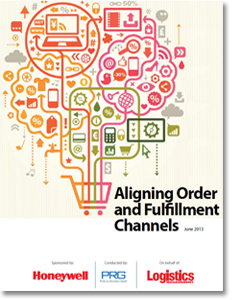Aligning Order and Fulfillment Channels
The biggest change we've made to our fulfillment operations over the past few years is to have more of a customer focus on delivery times and reduce inventory across our end to end supply chain operations.
The state of order fulfillment: Faster and more efficient
The mission of an order fulfillment center is the efficient assembly and timely shipment of the perfect order. Product, labor, equipment and operating systems must all come together in support of this mission.
As customer demands increase, however, managers find themselves challenged by a number of issues. On top of most everyone’s list is the need to “fulfill more orders, faster and at lower costs”.
This is a particularly critical requirement when dealing with today’s highly demanding e-commerce customer who frequently expects immediate gratification and nothing less than next-day service.
Today’s fulfillment operation must not only react as quickly as possible to process these types of orders faster, but must do so with tighter distribution budgets.
It is surprising to note that the issue of least concern to today’s logistics managers is that of “tying DC operations with storefront distribution”.
This is being overlooked by today’s managers, who may be thinking of the DC and the store as two distinct silos of operation.
To create the leaner, more agile supply chain of the future, companies must operate a centralized inventory, fulfillment, and merchandising planning system that has fulfillment operations in the DC fully synchronized with a store’s demand patterns.
So how are they stepping up to the challenge of faster, more efficient fulfillment?
Most are “implementing or upgrading their supply chain software applications”. These applications automate previously paper-based and batched exchange of information to allow for more accurate, real-time, end-to-end visibility.
Others are “re-engineering their operations”, introducing hardware and process solutions that increase throughput while lowering costs.
Some reengineering examples may include the use of wireless, paperless picking and scanning devices using radio frequency (RF) technology for real–time tracking of orders, batch picking strategies and the use of conveyors and other forms of automation.
Finally, some are “leveraging supply chain analytics” - taking a deeper look at their entire network, including inbound and outbound transportation strategies, such that inventory can be optimally located on nodes that will increase speed to the customer while minimizing transportation and facility costs.
What’s Related




Favorites





